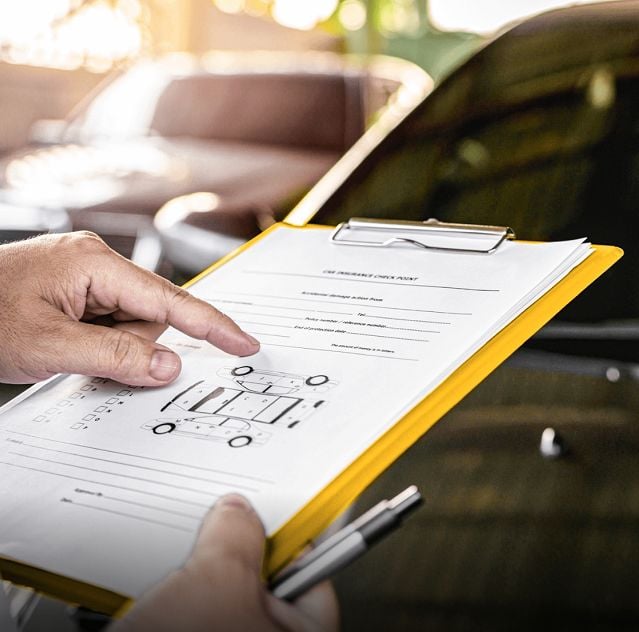

The History of the Mitsubishi Pajero Evolution V6 4×4
The History of the Mitsubishi Pajero Evolution V6 4×4, launched in 1982, transitioned from a basic 4×4 to a luxurious SUV while maintaining its renowned off-road capabilities. The first-generation Pajero was revolutionary with its 2.6L inline-four engine, and the introduction of the V6 engine in 1988 elevated its status among enthusiasts. The Pajero has continually evolved with technological advancements like the Super Select 4WD system, multimode ABS, and the 3.5-liter 24-valve DOHC V6 engine. The Pajero Evolution was specifically designed for the Dakar Rally in 1997, highlighting Mitsubishi’s commitment to innovation, performance, and driving pleasure. Despite halting production in 2007, the Pajero Evolution remains an iconic vehicle in the automotive world.
In the world of off-road vehicles, the name Mitsubishi Pajero is synonymous with resilience, power, and an unrivaled four-wheel drive experience. This article delves into the captivating history of the Pajero, tracing its evolution from a mere concept to the iconic 4×4 it is today. We will explore the enduring legacy of its powerful V6 engine and dissect the intricate transformation of the Pajero – from its inception to its evolution as a preferred 4×4. Whether you are a car enthusiast or a proud Pajero owner, this comprehensive look at the Mitsubishi Pajero Evolution promises to be a thrilling ride. Buckle up as we journey through time to understand the making of this legendary vehicle.
Tracing the Evolution of the Iconic Mitsubishi Pajero 4×4
The Mitsubishi Pajero, renowned for its robust 4×4 capabilities and adventurous spirit, has a rich history that dates back to its inception in 1982. Tracing the evolution of this iconic model, we see the Pajero transitioning from a basic four-wheel drive into a luxurious SUV, all the while maintaining its rugged, off-road prowess.
The first generation of Pajero, introduced in 1982, was a game-changer in the world of 4×4 vehicles. Powered by a 2.6L inline-four engine, it was an instant success, setting the groundwork for the future models. However, it was the introduction of the V6 engine in 1988 that truly set the Pajero apart from its competitors. The V6 engine offered more power and smoother performance, making it a favourite among off-road enthusiasts.
The second generation of the Pajero, launched in 1991, was a significant upgrade from its predecessor. It featured advanced tech such as Super Select 4WD (SS4) and multimode ABS, which were firsts in the world of 4×4 vehicles. Yet, the defining moment in the Pajero’s evolution was undoubtedly the introduction of the Pajero Evolution in 1997. This model, designed specifically for the Dakar Rally, was the epitome of Mitsubishi’s technological achievements. It was equipped with a 3.5L V6 engine, delivering a stunning performance that earned it a legendary status in the world of rally racing.
The third and fourth generations marked the Pajero’s transition into a more luxurious SUV without compromising its off-road capabilities. The third-generation Pajero, introduced in 1999, was more refined and comfortable, yet it retained the ruggedness that made it a favorite among off-road enthusiasts. The fourth generation, introduced in 2006, further cemented the Pajero’s status as a luxurious SUV, featuring a sophisticated design and advanced technologies.
Throughout its evolution, the Mitsubishi Pajero has consistently proven its resilience, versatility, and adventurous spirit. From its origins as a basic 4×4 to its current status as a luxurious SUV, the Pajero has always been a vehicle that’s ready to take on any challenge. Its rich history and continuous evolution reflect Mitsubishi’s commitment to innovation, performance, and driving pleasure. The Pajero’s evolution is a testament to its iconic status in the world of 4×4 vehicles.
The Powerful V6 Legacy of the Mitsubishi Pajero Evolution
The Mitsubishi Pajero Evolution, affectionately known as the Pajero Evo, is renowned for its powerful V6 engine legacy. This 4×4 marvel, born out of the stringent requirements of the Dakar Rally, is an embodiment of Mitsubishi’s commitment to high-performance engineering and technological excellence.
The evolution of the Pajero began with the introduction of the first-generation model in 1982. It was powered by a variety of engines, ranging from a 2.0-liter four-cylinder to a 3.0-liter V6. However, it was not until the third generation model, launched in 1999, that the Pajero Evolution truly embraced the legacy of the V6 engine.
The Mitsubishi Pajero Evolution was fitted with a 3.5-liter 24-valve DOHC V6 engine, which produced an impressive 276 horsepower. This engine was specially designed for the Pajero Evo and offered a perfect balance between power, efficiency, and reliability. The V6 engine was paired with Mitsubishi’s innovative Super Select 4WD system, which allowed the driver to switch between two-wheel drive and four-wheel drive on the move, further enhancing the vehicle’s off-road prowess.
The Pajero Evolution’s V6 engine was not only powerful but also uniquely adaptable to various driving conditions, from city streets to the toughest terrains. This adaptability was a testament to Mitsubishi’s advanced engineering and dedication to creating a vehicle that could stand up to any challenge. The Pajero Evo’s V6 engine, combined with its superior 4×4 capabilities, made it a formidable force in the Dakar Rally, where it notched up multiple victories.
The V6 legacy of the Mitsubishi Pajero Evolution is a reflection of the company’s commitment to performance, durability, and technological innovation. It has set a benchmark in the 4×4 category and has cemented the Pajero Evo’s place in the annals of automotive history. Despite the end of its production in 2007, the Mitsubishi Pajero Evolution, with its powerful V6 engine, continues to be a beloved icon among off-road enthusiasts and motorsport fans worldwide.
A Closer Look at the Mitsubishi Pajero: From its Inception to its 4×4 Evolution
The Mitsubishi Pajero, a name synonymous with rugged dependability and off-road prowess, has a history that is as rich and varied as the landscapes it has conquered over the years. The story of this iconic 4×4 vehicle began in 1982 when the first generation of the Pajero was introduced to the world, showcasing Mitsubishi’s commitment to producing vehicles that were as tough as they were technologically advanced.
The first generation Pajero was introduced as a two-door, four-wheel drive vehicle, which was powered by a range of engines, including a 2.6 L inline four-cylinder petrol engine and a 2.3 L turbo-diesel engine. However, it was the introduction of the V6 engine in 1989 that truly set the Mitsubishi Pajero apart from its competitors. The 3.0 L V6 petrol engine, which was the first in the world to feature 24 valves, provided the Pajero with impressive power and performance, further enhancing its reputation as a formidable off-road vehicle.
The Evolution variant of the Mitsubishi Pajero, which was introduced in 1997, took the Pajero’s off-road capabilities to a new level. This model was developed specifically for the grueling Paris-Dakar Rally, one of the world’s most demanding off-road races. The Pajero Evolution featured a range of enhancements, including a more powerful 3.5 L V6 engine, a wider track for increased stability, and an advanced four-wheel drive system that offered superior traction and control.
Over the years, the Mitsubishi Pajero has evolved to meet the changing needs and expectations of its customers. Despite the changes and improvements, the Pajero has always remained true to its core values of durability, reliability, and off-road ability. Whether it’s traversing the vast open plains of Africa or navigating the narrow city streets of Europe, the Pajero has consistently proven itself to be a dependable and versatile vehicle.
Today, the Mitsubishi Pajero continues to be a favorite among off-road enthusiasts and adventurers worldwide. Its rich history and evolution are a testament to Mitsubishi’s dedication to innovation and quality, as well as its commitment to providing vehicles that are not just capable, but also enjoyable to drive. As we look forward to the next chapter in the Pajero’s storied history, we can be sure that Mitsubishi will continue to push the boundaries of what is possible in a 4×4 vehicle.
Table of Contents
ToggleAdd a comment Cancel reply
Categories
- Auto Detailing (4)
- Car News (47)
- Car Reviews (35)
- Classic Cars (20)
- Importing Rules By Country (5)
- Japan Car Auctions (2)
- JDM (15)
- Uncategorized (22)
Recent Posts
About us

I am not one for writing articles actually so most of these articles come from contributors that I have met over the years or with a little help of our AI buddy.
If you have any desire to import a car from Japan or simply need some advice get in touch via Whatsapp here at +81-90-5400-6384
Looking For That Special Car Has Never Been Easier.
Finding the right car in Japan is not always easy and finding the best partner in Japan to help you with this is sometimes even harder.
With over 25 years buying history and great contacts all over Japan I can help you in every way.
Get hold of me today!
Popular Tags
Related posts


Tracing the Legacy of Mitsubishi Delica


Toyota Crown and Majesta in the JDM Turbo Era


A Journey Into The Honda Integra DC2








